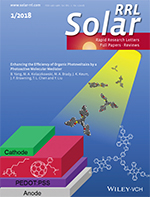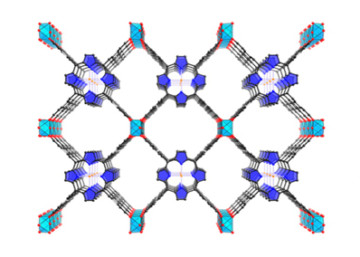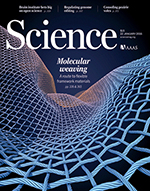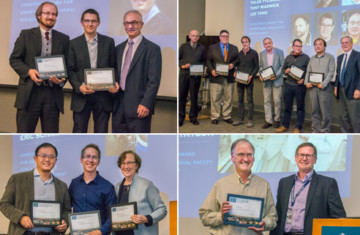In the search for high-efficiency organic solar cells, additives often play an important role in improving the film morphology. Liquid additives, while often effective, evaporate or migrate over time. Herein, Liu et al. report a solid photoactive molecular mediator that could be employed to replace the liquid additives to tune the morphology of bulk heterojunction films for improved device performance. Read more »
Porous-Framework Electrocatalysts Are Key to Carbon Dioxide Conversion
Researchers have made significant headway in the quest to convert CO2 into valuable chemical products such as fuels, pharmaceuticals, and plastics. Recent work at the ALS has shown MOFs and COFs as a valuable new class of CO2 reduction catalysts. Read more »![]()
![]()
Weaving of organic threads into a crystalline covalent organic framework
Threads made from organic molecules linked by strong covalent bonds were used to weave a 3D covalent organic framework with unusual dynamical and mechanical properties. This molecular weaving method will enable the production of materials with increased precision and functionality. Read more »
Following the Morphology Formation In Situ in Printed Active Layers for Organic Solar Cells
Time-resolved scattering measurements reveal the complete solidification process inside the photoactive layer of an organic solar cell. With an industrial slot-die coater integrated into the beamline, aggregation and crystallization processes can be tracked to reveal the structure-function relationships in the final thin film. Read more »
2015 Director’s Awards
ALS staff took top honors in Lawrence Berkeley National Lab’s 2015 Director’s Awards for Exceptional Achievement and were recognized in a ceremony earlier this month. The ALS recipients comprised nearly half of this year’s awardees, receiving recognition in the scientific, early scientific career, and safety categories. The Director’s Awards honor individuals in both the scientific and operations divisions forRead More Read more »




